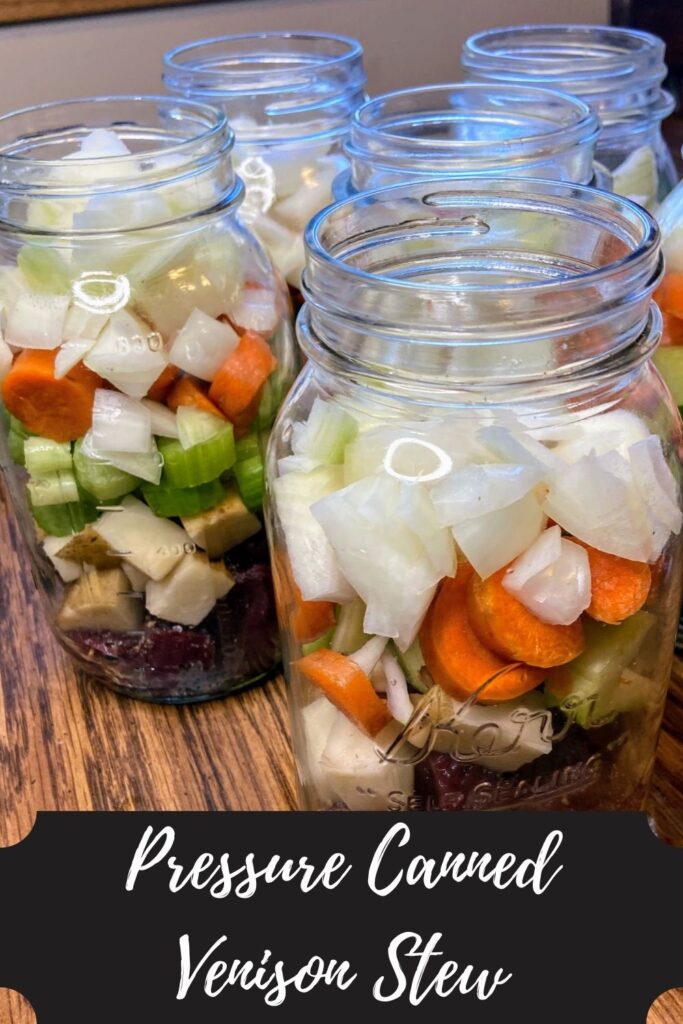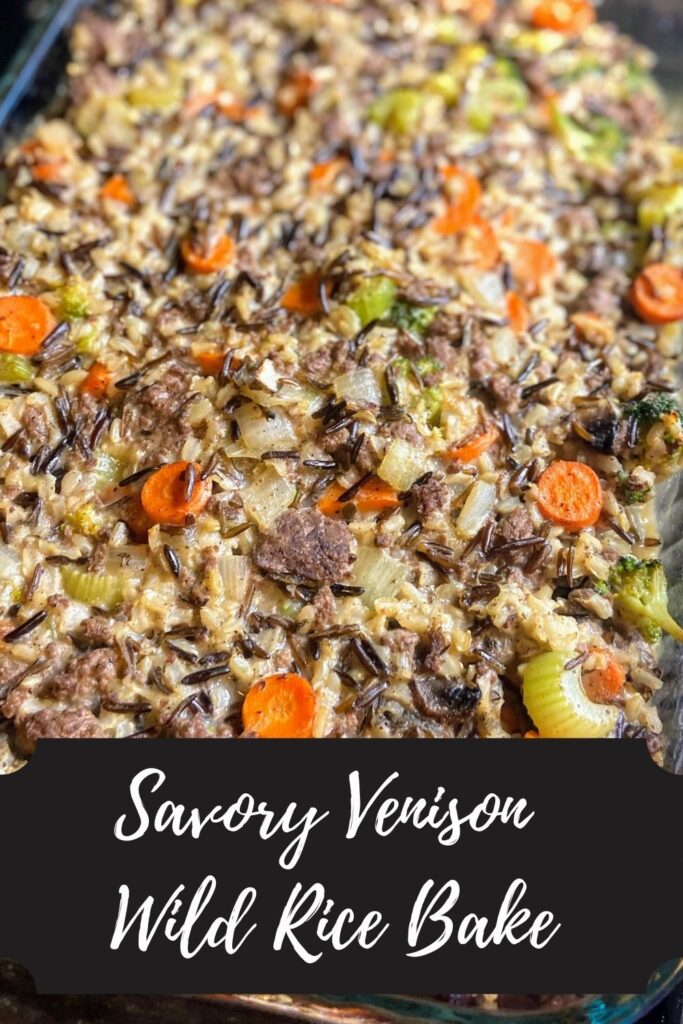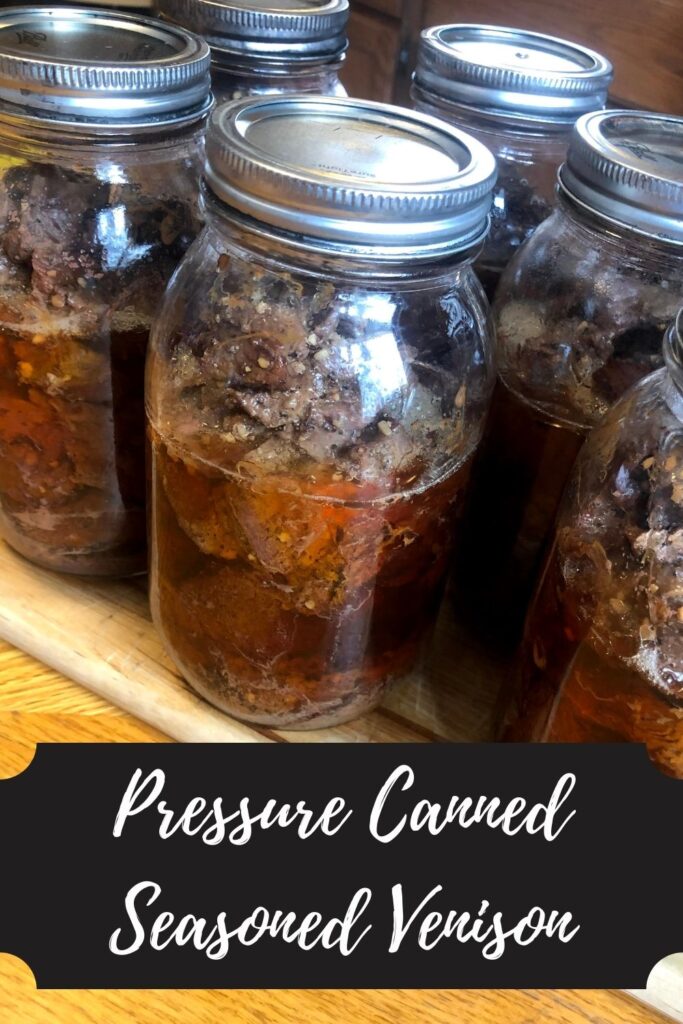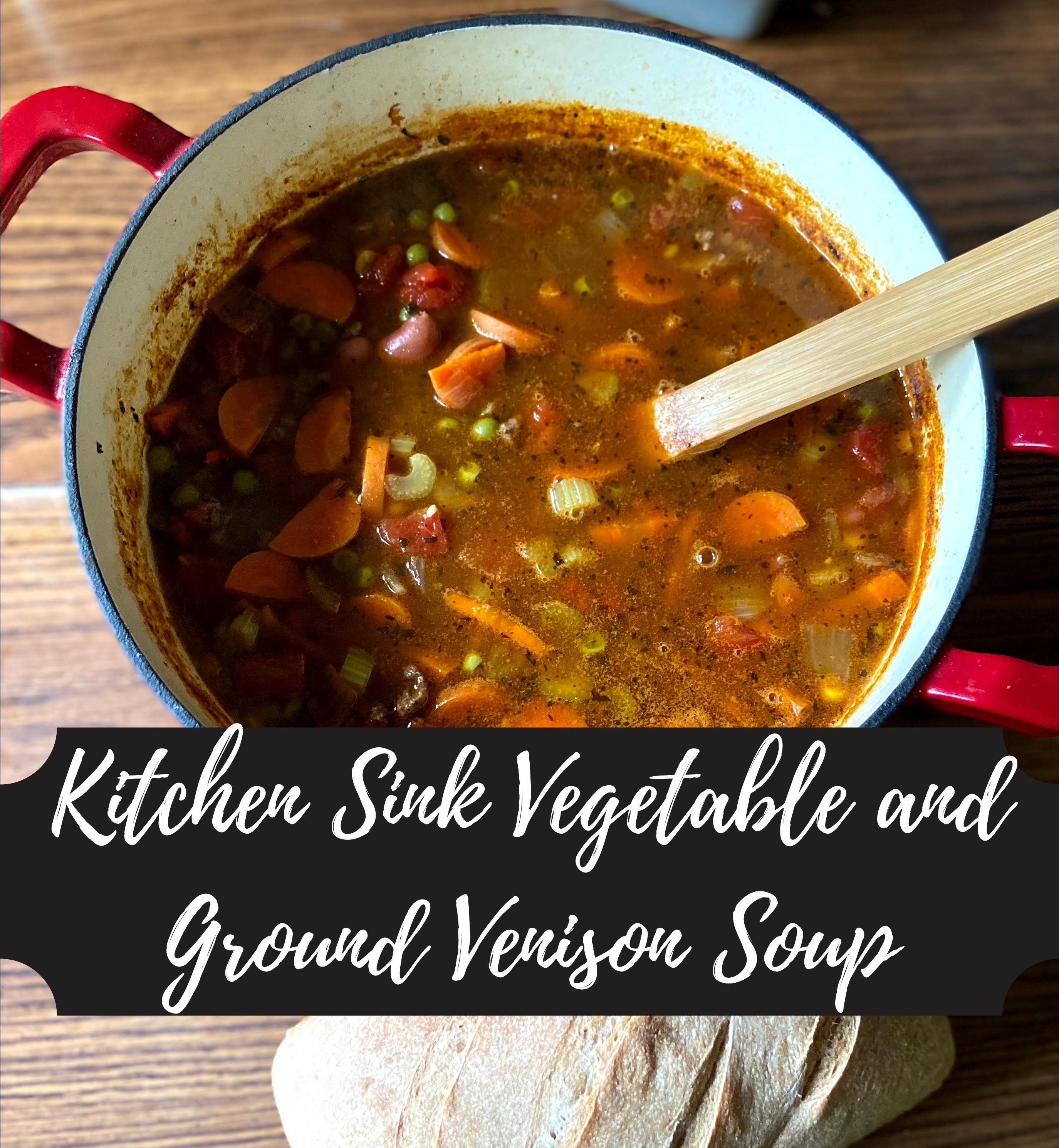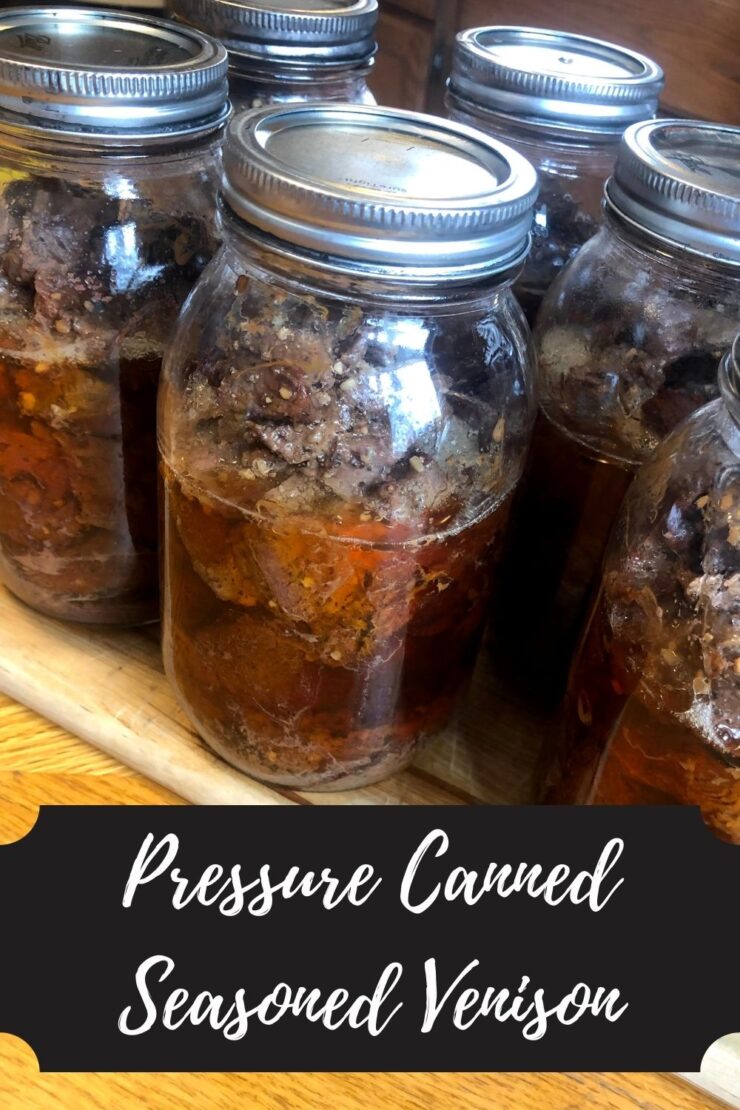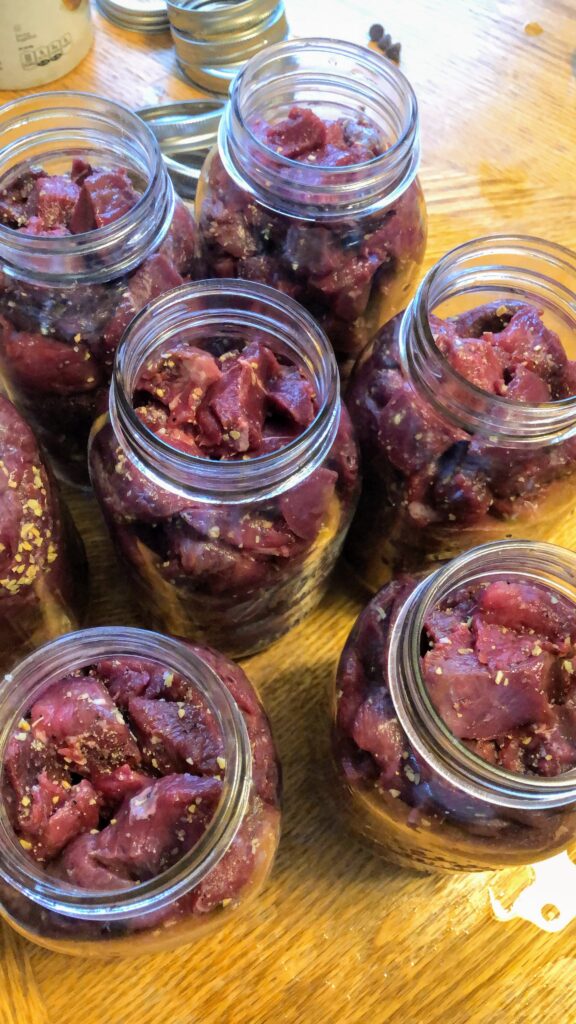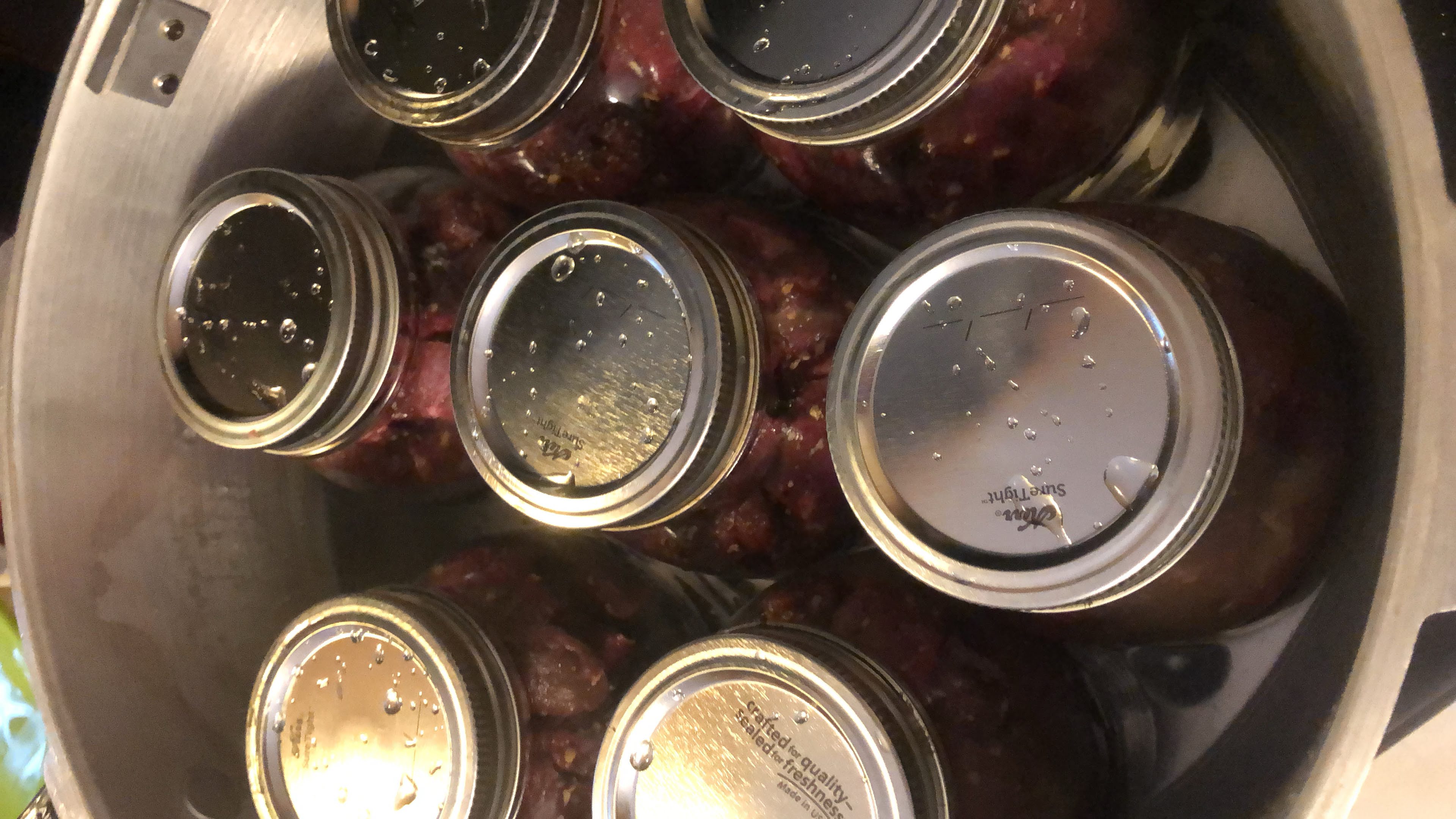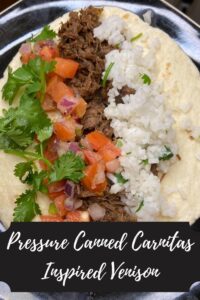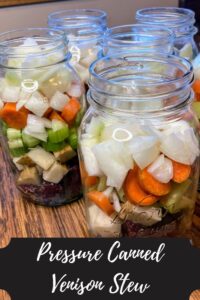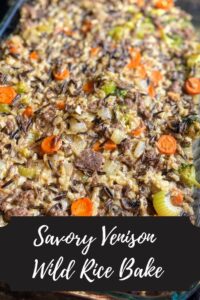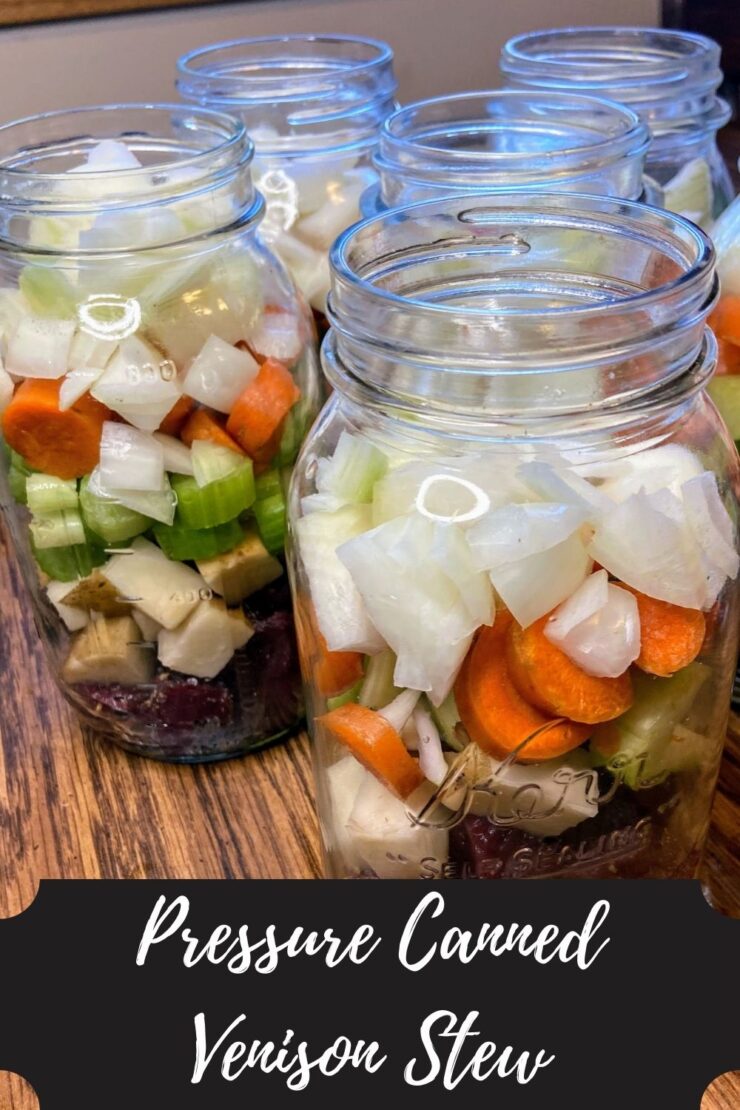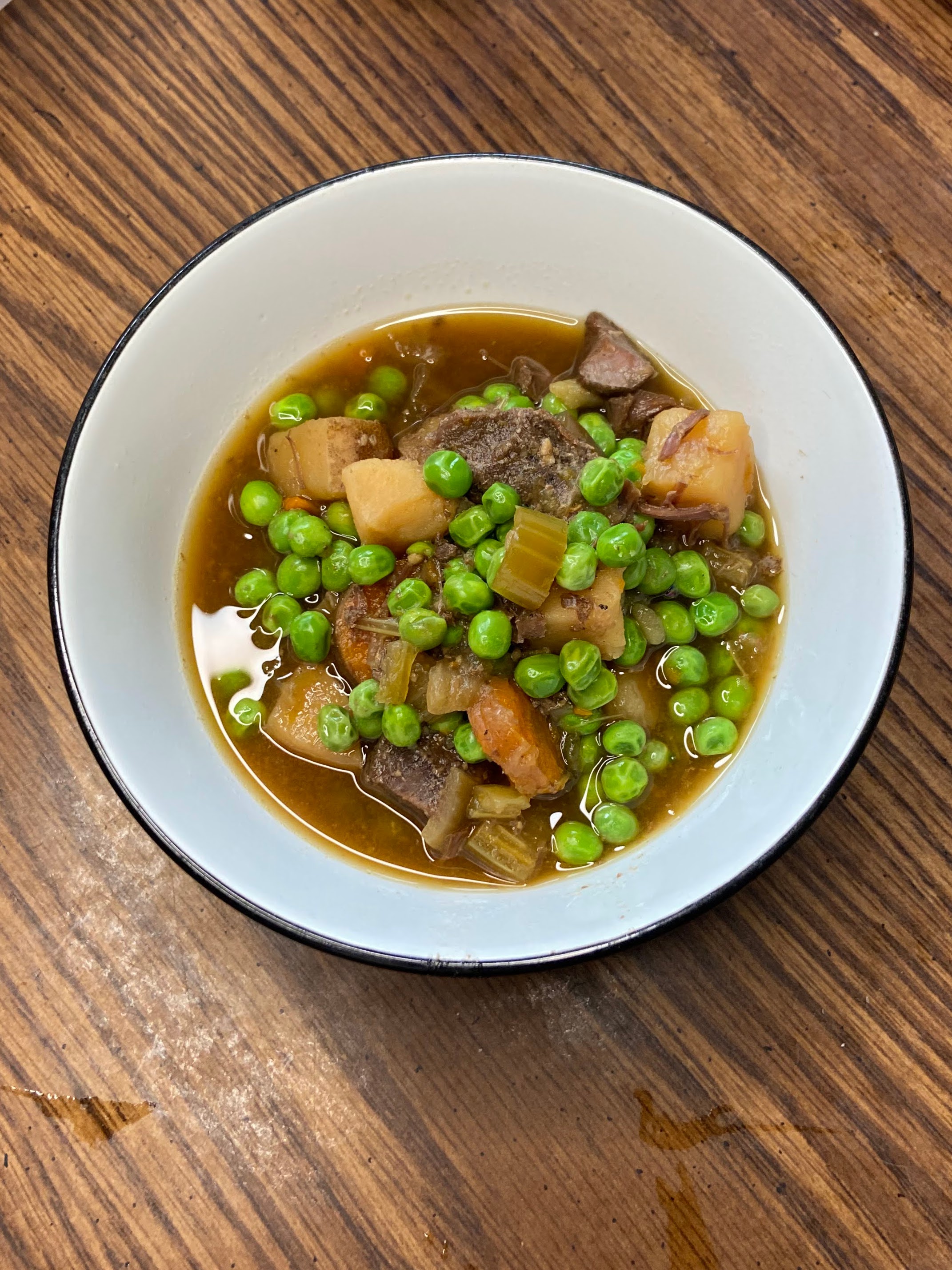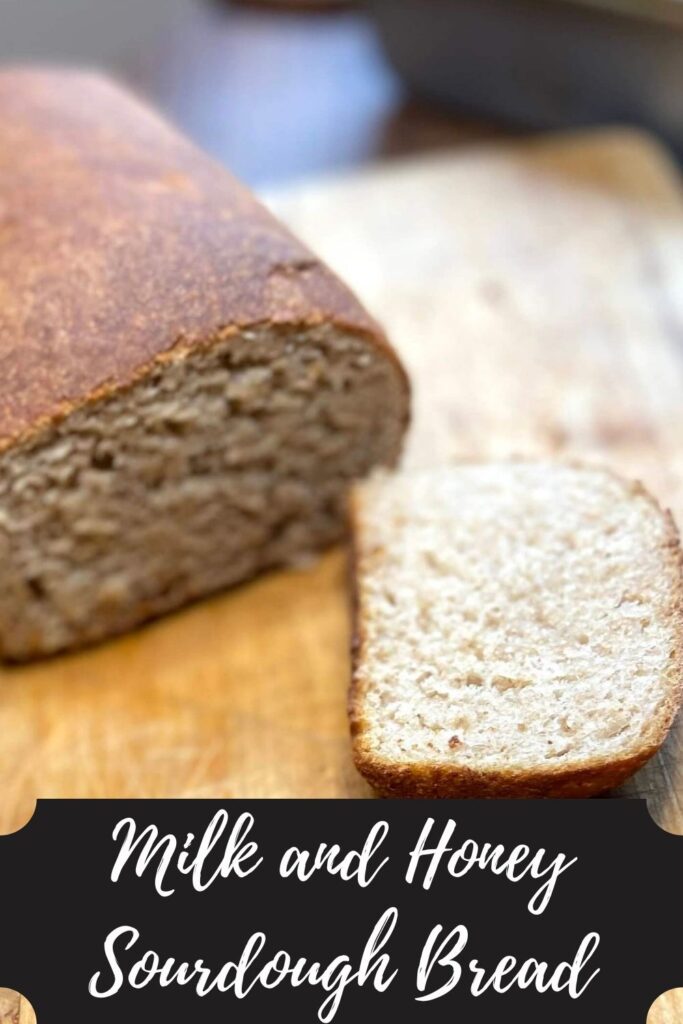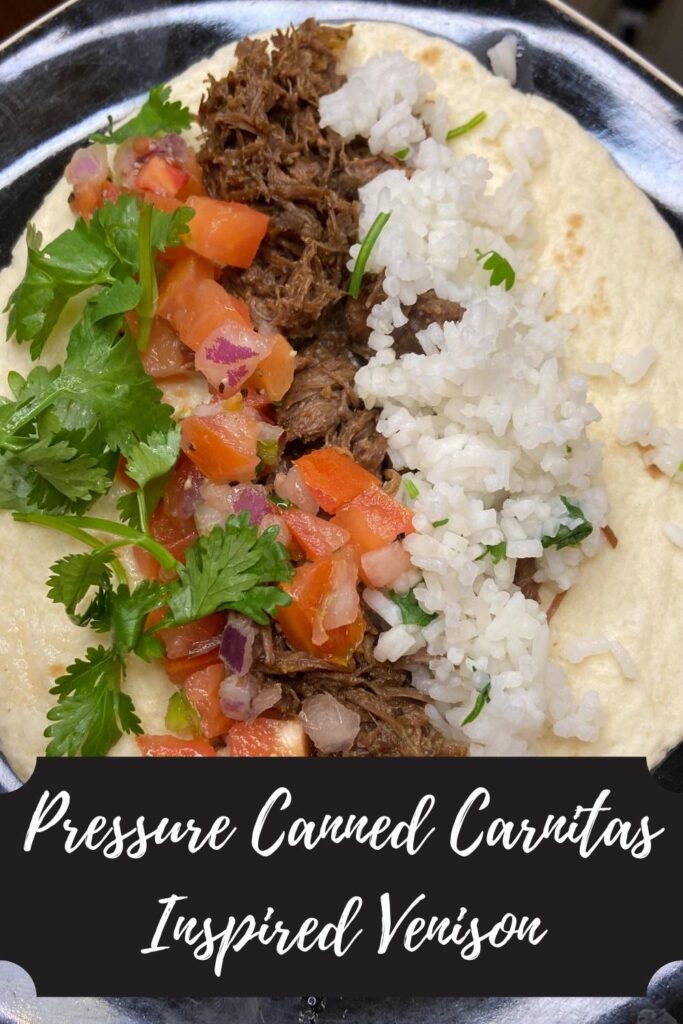Last year, we got skunked in terms of filling our freezer with venison. I am not a hunter, but my husband is an avid hunter. This year, he has provided us with three deer that we process all on our own. That means I have been able to get my pressure canning on and perhaps the best thing to come from that is this pressure canned carnitas inspired venison.
I would be lying if I said I wasn’t a little worried about how this would turn out. Our family has a go to crockpot carnita recipe that utilizes a pork butt. When we had a kettle of cubed venison for canning, I thought, “What if we seasoned it with the carnita seasoning? Would it take it on well? How would it go on tacos or nachos?” The answer: It’s DELICIOUS and will be added to our rotation of canning every year from here on out.
Pressure canning is my job in our home, and I wouldn’t have it any other way. I know there are horror stories of pressure canning out there and a number of people are afraid of it. And if they aren’t afraid of the act of canning the meat, they are hesitant to eat pressure canned seasoned venison. “How can meat be self stable and room temperature and still be okay to eat?” I promise, its easier than you think and the meat is great to eat. I follow all the recommendations from the National Center for Home Preservation. Let me tell you, this stuff is GOOD.
Why should you can venison?
The meat is SO tender. It heats up in minutes, and you can have a meal on the table in under ten. The convenience is out of this world and you are still able to serve your family good for you food without being processed. We served this pressure canned carnitas inspired venison with some pico de gallo, lettuce, cilantro lime rice and cheese. It was loved all around.
Bottom line? I am beyond excited to share how I prepare this pressure canned venison with all of you. I promise there is no reason to be afraid of a pressure canner. At the beginning, I was100% a novice who simply did some reading at the beginning. The only caution I want to give is that it does take time (primarily hands off) for it to cook. I would say make sure you have three hours to be around the house, but truly you can be doing other things while it cooks. Just be present. If you do want more information, read your canner’s directions or check out the NCHP.
Ready to create some pressure canned venison stew? Let’s go!
Your Ingredients (for 9 pints of Pressure Canned Carnitas Venison)
14 cups raw, cubed venison
2 ¼ cup onion (¼ cup of onion per pint jar-you’ll want a little extra so no jar goes without)
Seasoning (see below)
Seasoning
Combine 5 teaspoons salt, 3 ½ teaspoons dried oregano, 3 ½ tablespoons cumin, and ⅓-½ teaspoon cayenne pepper. (you can add more if you would like but I went with the idea that I can always add more, but I can’t take it out)
Tools of the Trade
Normally, I put this at the end of a post, but with a pressure canner, I feel as though I should put it at the beginning. I love using my weighted pressure canner. It doesn’t stress me out and I can create so many great things with it. I also think a canning funnel is a must here.
Before you start this process, make sure you read the general directions to your own pressure canner. They may differ from what I am sharing, and you should always follow those directions first. Also, if you are a beginner canner or even advanced, it is always a great idea to check out the National Center for Home Preservation Site for more information!
Your Steps to Pressure Canned Carnitas Inspired Venison
Begin by preparing your canner and jars. Wash and sterilize pint jars, rings, and lids. Keep warm. Check the seal and center vent of your lid of the canner. Set aside.
Season prepared meat with seasoning mixture. Mix well to fully coat the meat. Using a canning funnel, add ¼ cup onion in each jar. Fill the remaining space with seasoned meat, leaving 1 inch of headspace.
Wipe rims with a damp cloth, center the lid on the jar and adjust the band to fingertip tight.
Place jars on the rack of a prepared pressure canner (mine needs 3 quarts of hot water plus a splash of vinegar).
Place the lid on the canner and heat to high heat. Once a steady stream of steam can be seen/felt, vent for 10 minutes, adjusting the heat if needed to have a steady but not crazy stream of steam. After 10 minutes, put the weighted gauge on the vent. You will want 10 pounds if your altitude is under 1000 ft; 15 pounds if you are over 1000 ft.
Once the weight starts to jiggle (indicating it has reached the appropriate pressure), begin timing. You will need to process pint jars for 75 minutes and quart jars for 90 minutes. Once the timer has gone off, turn off and remove the canner from heat. Allow the pressure to drop on the canner all the way (read specific canner instructions for the indicator-this takes about 45 minutes). Remove weight and allow to cool an additional 10 minutes. Remove jars from canner; do not retighten bands. Cool 12 hours, then check their seals, label, and store jars.
Again, we served this carnitas style venison with tortillas and all the fixings: pico de gallo, lettuce, cilantro-lim lime, and cheese. Black beans would be a great addition as well!




Looking for a video of the process of canning meat? You can check out my regular seasoned pressure canned venison recipe.

Pressure Canned Carnitas Inspired Venison
Equipment
Ingredients
- 14 cups cubed venison stew meat (about 7 pounds)
- 2 ½ cups chopped onion
- 5 teaspoons canning salt
- 3 ½ teaspoons dried oregano
- 3 ½ tablespoons cumin
- ⅓-½ teaspoon cayenne pepper to taste
Instructions
- Begin by preparing your canner and jars. Wash and sterilize quart jars, rings, and lids. Keep warm. Check the seal and center vent of your lid the canner. Set aside.
- Combine salt, oregano, cumin, and cayenne pepper.
- Season prepared meat with seasoning mixture.
- Stuff pint jars with ¼ cup onion. Finish with raw seasoned meat, leaving 1 inch of head space.
- Wipe rims with a damp cloth, center the lid on the jar and adjust the band to fingertip tight.
- Place jars on the rack of a prepared pressure canner (mine needs 3 quarts of hot water plus a splash of vinegar).
- Process pint jars for 75 minutes at 10 pounds. If your altitude is greater than 1000 feet, use 15 pounds. Follow the directions of your pressure canner or see the more detailed directions in the notes.
Notes
Once the weight starts to jiggle (indicating it has reached the appropriate pressure), begin timing. You will need to process pint jars for 75 minutes and quart jars for 90 minutes. Once the timer has gone off, turn off and remove the canner from heat. Allow the pressure to drop on the canner all the way (read specific canner instructions for the indicator). Remove weight and allow to cool an additional 10 minutes. Remove jars from canner; do not retighten bands. Cool 12 hours, then check their seals, label, and store jars.
Looking for other venison inspiration?
Check out some of the posts below!
